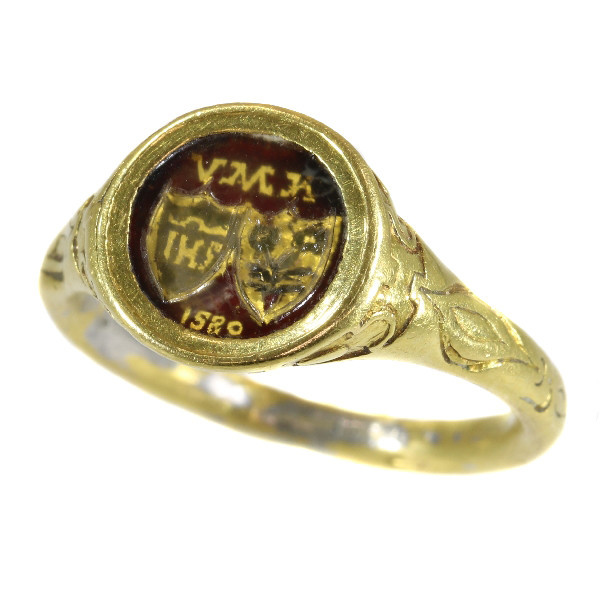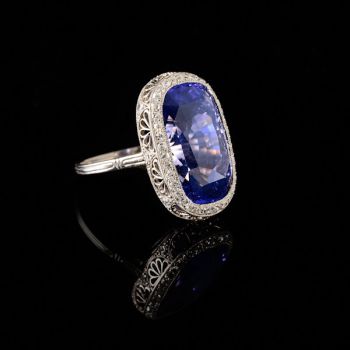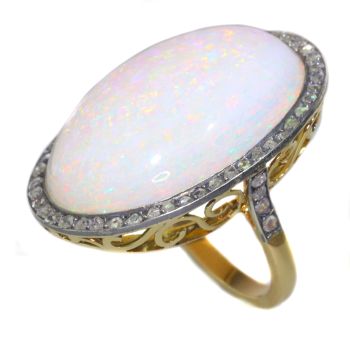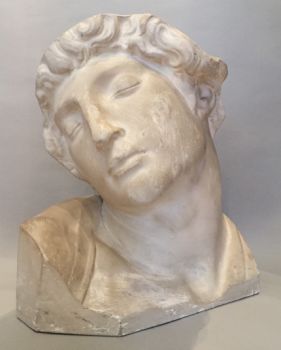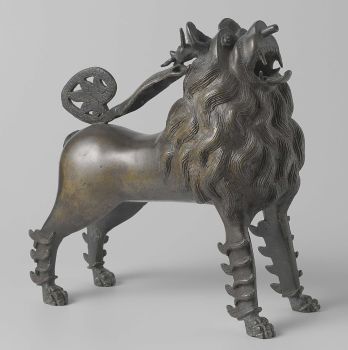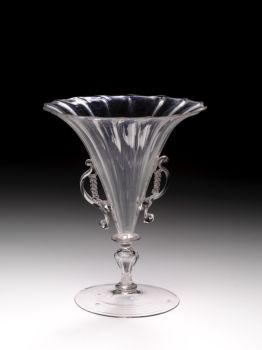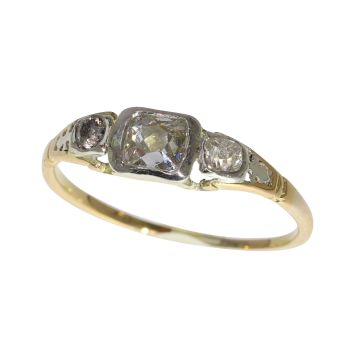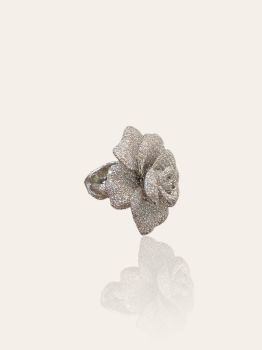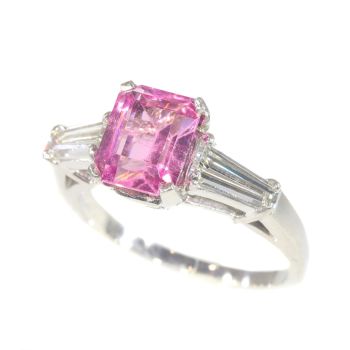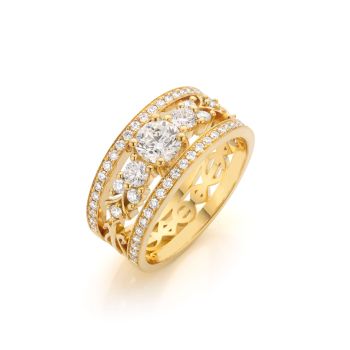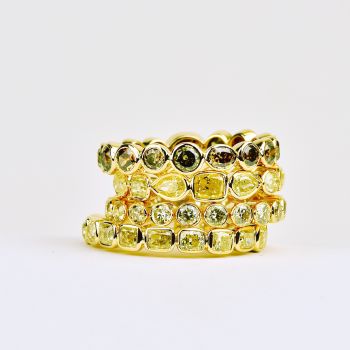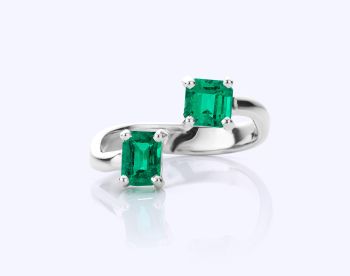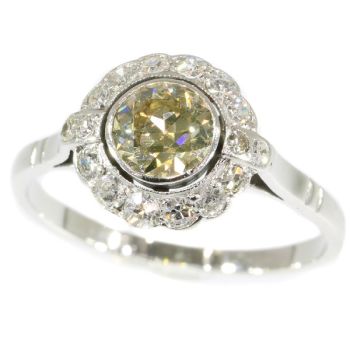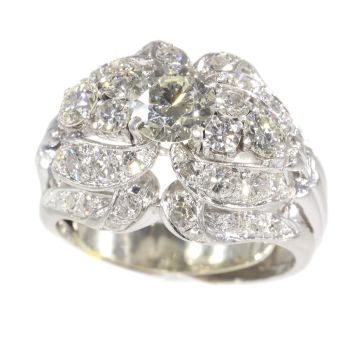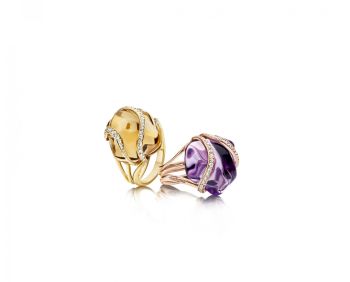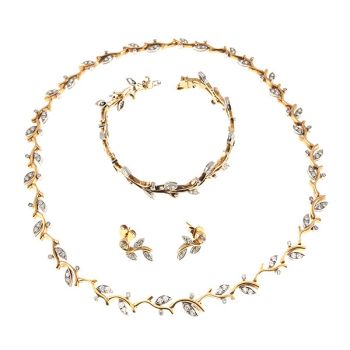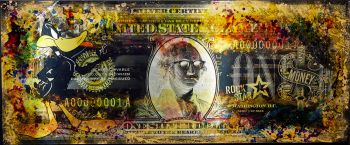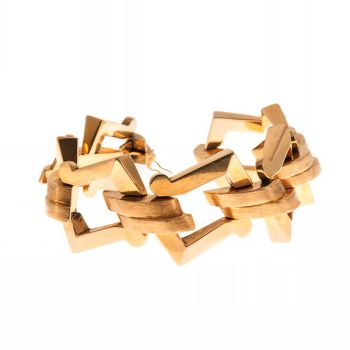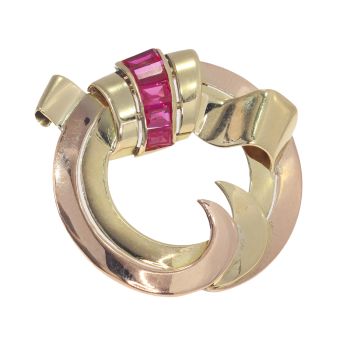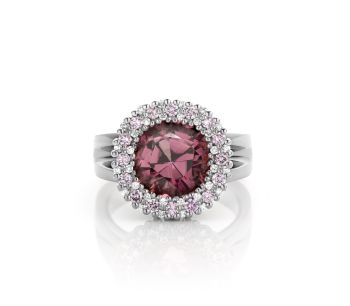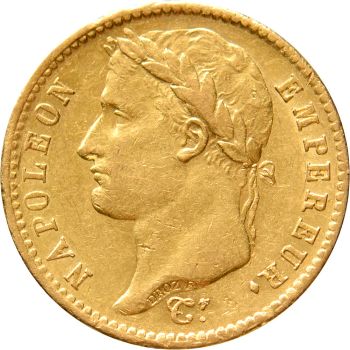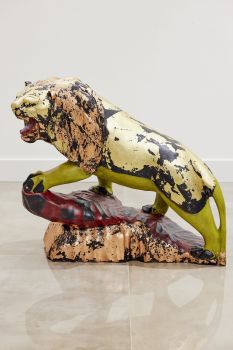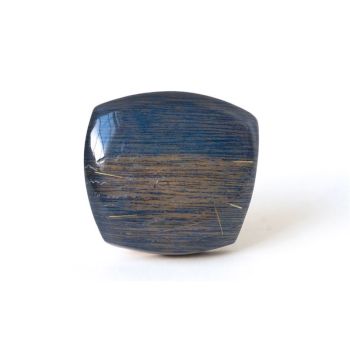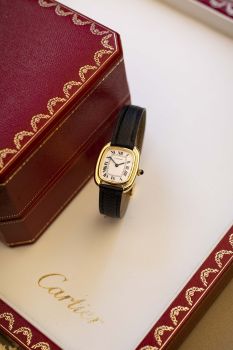Renaissance brotherhood ring with two coat of arms behind transparant window 1520
Artista Desconhecido
Ouro
Atualmente indisponível via Gallerease
- Sobre arte
There's a depth to this 18K yellow gold Renaissance ring as it must have gone to astonishing lengths to make it from the year 1580 to our present time.
The identity of the initial owner is fused into four engravings embedded in red enamel in the top of the ring and safely sealed off presumably by a small slice of rock crystal. One coat of arms with the Christogram "IHS" and one with a monogram of aflowering stem both topped by the letters VMK must symbolise a brotherhood of great beliefs. We dare say even of great importance, as the ring is made out of 18K gold which elevates it to a higher level of noblesse.
Once, this ring may have been crafted as part of a person's history, but each person it touches here and now actually becomes part of the ring's own chronicle. What an extraordinary experience to be part of something before and beyond yourself.
Rings with a similar amount of allure and heritage are comprehensively described in the book "Rings - Jewelry of Power, Love and Loyalty" by Diana Scarisbrick, published by Thames & Hudson (ISBN 978-0-500-29112-2)
Antique jewelry object group: ring
Condition: acceptable condition especially considering its age. (traces of wear aside head of ring and remains of old repairs at the inside of the shank)
- (more info on our condition scale)
Country of origin: unknown
Style: Renaissance - The Renaissance (Italian: Rinascimento, from ri- "again" and nascere "be born") was a cultural movement that spanned roughly the 14th to the 17th century, beginning in Florence in the Late Middle Ages and later spreading to the rest ofEurope. The term is also used more loosely to refer to the historic era, but since the changes of the Renaissance were not uniform across Europe, this is a general use of the term. As a cultural movement, it encompassed a resurgence of learning based onclassical sources, the development of linear perspective in painting, and gradual but widespread educational reform. Traditionally, this intellectual transformation has resulted in the Renaissance being viewed as a bridge between the Middle Ages and theModern era. Although the Renaissance saw revolutions in many intellectual pursuits, as well as social and political upheaval, it is perhaps best known for its artistic developments and the contributions of such polymaths as Leonardo da Vinci andMichelangelo, who inspired the term "Renaissance man".
- See also: Renaissanceor more info on styles
Period: either 1520 or 1580
- (events & facts of this era, poetry of this era, fashion of this era)
Theme: Renaissance brotherhood ring in gold centered of a probably rock crystal on paillon and engraved with two coats of arms
Material: 18K yellow gold
- (more info on precious metals)
Technique: Enamelling is an old and widely-adopted technology. The ancient Egyptians applied enamels to pottery and stone objects. The ancient Greeks, Celts, Russians, and Chinese also used enameling processes on metal objects. Enamel is the colorful result offusing powdered glass to a substrate by firing, usually between 750 and 850 degrees Celsius. The powder melts and flows and hardens to a smooth, durable vitreous coating on metal, glass or ceramic. According to some sources, the word enamel comes fromthe High German word smelzan (to smelt) via the Old French esmail. Used as a noun, "an enamel" is a usually small decorative object, coated with enamel coating, such as a champlevé or a cloisonné (different techniques).
Extra information (1): IHS and flowering stem, dated 1520 (or 1580?), are summed letters VMK (?) Shoulders and basket decorated with geometries, (formerly enamelled) for similar rings see: Rings, Jewelry of Power, Love and Loyalty, Diana Scarisbrick, Ed Thames and Hudson page 36 and 37
Extra information (2): IHS - IHS also called a Christogram, is a monogram symbolizing Jesus Christ. From Greek it is an abbreviation of the name Jesus. In Eastern Orthodox Church the Christogram is composed with letters X and P and I and X arranged into the cross. They arethe first letters of one from two words in Greek language: Christ and Jesus Christ. In the Western culture there exist the compositions: "IHS" and also "IHC" being the first letters (iota-eta-sigma) of the name Jesus in Greek alphabet. The abbreviationin form "IHS" appeared in first time on the coins of Justinian II on the turn of the 7th and 8th centuries. The order of Jesuits, in other words the Society of Jesus (Societas Iesu), adopted IHS as its fixed emblem - the symbol in 17th century. Thereappeared also Latin interpretations of the abbreviation IHS, among others: Iesus Humilis Societas - Humble Society of Jesus, Iesus Hominum Salvator - Jesus, Savior of men, but and also In hoc signo (vinces) - In this sign (you will win). These developedinscriptions were most likely formed because in the Middle Ages people mistakenly read the letter E as H. (from: Wikipedia)
Precious stones: One rock crystal (?)
Hallmarks: No trace
- (more info on hallmarks)
Dimensions: width of top of ring 1,10 cm (0,43 inch)
Weight: 3,40 gram (2,19 dwt)
Ring size Continental: 54 & 17¼ , Size US 6¾ , Size UK: N
Resizing: Resizing is possible but because of the age of the ring we prefer to leave it untouched. We could make an additional inner ring so the ring itself is not harmed, for this work we have to charge. We cannot guarantee to make it on every size; so pleaseask in advance. Return policy on this ring is not valid anymore once this work has been done.
- (more info on ring sizes)
Reference Nº: 18143-0104
Copyright photography: Adin, fine antique jewelry
- Sobre artista
Pode acontecer que um artista ou criador seja desconhecido.
Algumas obras não devem ser determinadas por quem são feitas ou são feitas por (um grupo de) artesãos. Exemplos são estátuas dos tempos antigos, móveis, espelhos ou assinaturas que não são claras ou legíveis, mas também algumas obras não são assinadas.
Além disso, você pode encontrar a seguinte descrição:
•"Atribuído a …." Na opinião deles, provavelmente uma obra do artista, pelo menos em parte
• “Estúdio de…” ou “Oficina de” Em sua opinião um trabalho executado no estúdio ou oficina do artista, possivelmente sob sua supervisão
• "Círculo de ..." Na opinião deles, uma obra da época do artista mostrando sua influência, intimamente associada ao artista, mas não necessariamente seu aluno
•“Estilo de…” ou “Seguidor de…” Na opinião deles, um trabalho executado no estilo do artista, mas não necessariamente por um aluno; pode ser contemporâneo ou quase contemporâneo
• "Maneira de ..." Na opinião deles, uma obra no estilo do artista, mas de data posterior
•"Depois …." Na opinião deles uma cópia (de qualquer data) de uma obra do artista
• “Assinado…”, “Datado…” ou “Inscrito” Na opinião deles, a obra foi assinada/datada/inscrita pelo artista. A adição de um ponto de interrogação indica um elemento de dúvida
• "Com assinatura ….”, “Com data ….”, “Com inscrição ….” ou “Tem assinatura/data/inscrição” na opinião deles a assinatura/data/inscrição foi adicionada por outra pessoa que não o artista
Artwork details
Related artworks
Artista Desconhecido
Anel eduardiano com mudança de cor de safira1910 - 1920
Preço em pedidoAns Hemke-Kuilboer Juwelier & Antiquair
1 - 4 / 12- 1 - 4 / 6
- 1 - 4 / 24
- 1 - 1 / 1
Fontana
Broche de cesta de flores com pingente1900 - 1905
Preço em pedidoAns Hemke-Kuilboer Juwelier & Antiquair
1 - 4 / 24

